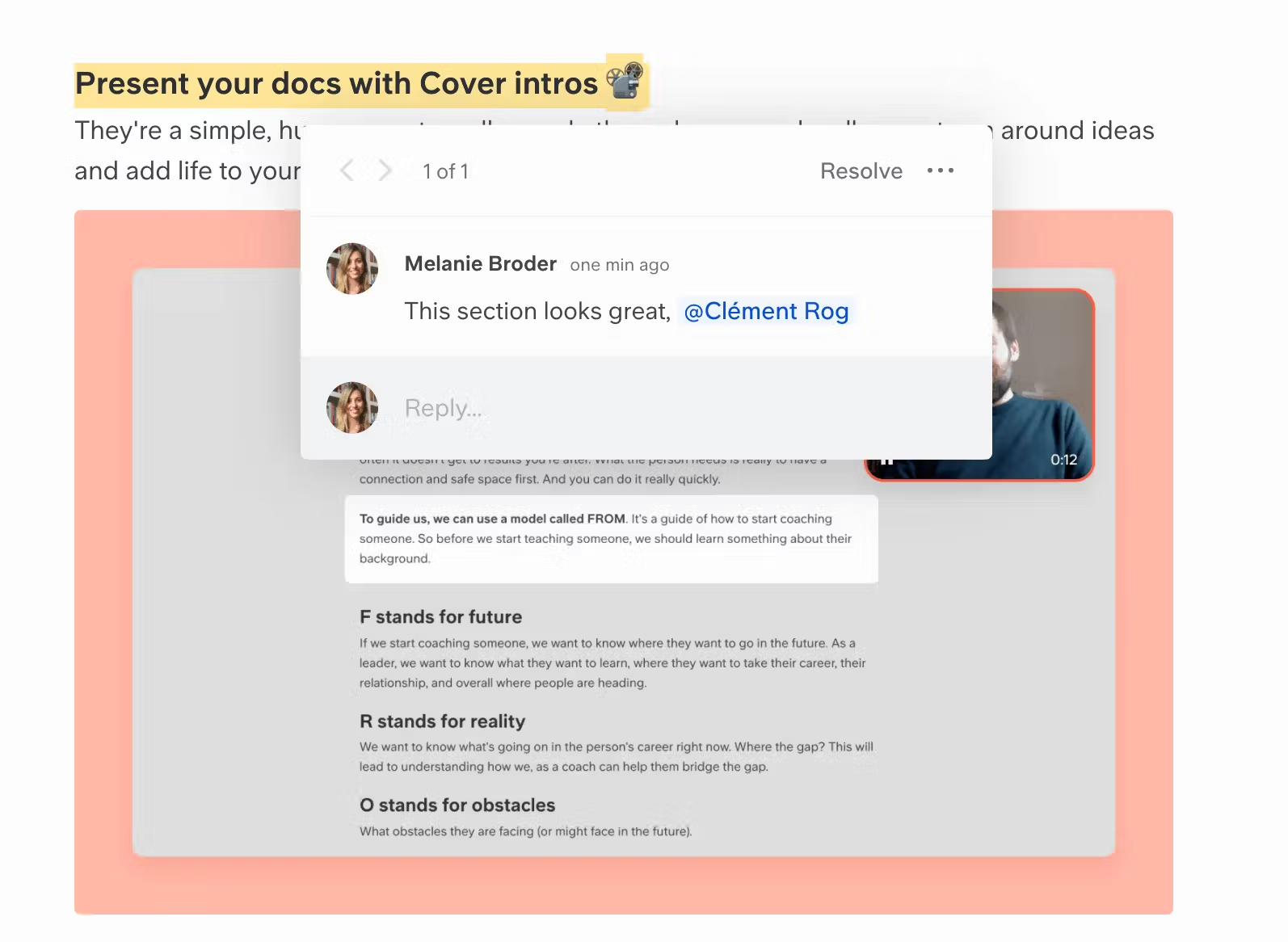What is asynchronous communication?
You’ve likely heard the term asynchronous communication come up. You might have even heard it talked about in relation to remote work. Even so, you're still likely wondering what asynchronous communication is all about.
All we can say is, if you're interested in the different ways people communicate (and even more so if remote working is your thing) you'll be a big fan of asynchronous communication.
Keep reading to find out what asynchronous communication is, its benefits, how it differs from synchronous communication, and why it's especially vital for remote workers. We'll even share a few of our top tips that'll help you get started working towards more asynchronous communication.
What is asynchronous communication?

In order to understand what the term asynchronous communication means, it's important to know the definition of the word asynchronous. Asynchronous is defined simply as, "not happening at the same time."
Logically, that means that the term asynchronous communication refers to forms of communication that aren't happening at the same time. There's always some kind of time delay or lag in between communications and responses. There's no immediate feedback or back-and-forth.
Examples of asynchronous communication include:
email messages
snail mail
pre-recorded videos
documents, and comments on documents, in a knowledge base such as Slite
Naturally, synchronous communication is the opposite of asynchronous communication, which refers to communication that does happen in real-time. Examples of synchronous communication include text messages, video conferencing, a chat in a Slack channel, phone calls, and synchronous meetings.
Although both synchronous and asynchronous communications are necessary for any top-notch communication strategy, asynchronous communication has become increasingly important in workplaces all around the world as of late. This is because of the rise of remote work and the need for communication channels that function across different schedules and time zones, but more on that later.
Examples of asynchronous communication

Whether you work on a remote team or in an office space, there are several different situations where you will use asynchronous communication. Here are a few examples of circumstances where it's absolutely essential.
1. Collaborating on documentation with project management tools
This asynchronous communication example is one of our favourites because Slite is such a fantastic solution for teams who need to create, manage, and collaborate on documentation. Not to brag, but we think that we're one of the best asynchronous communication tools out there.
Asynchronous communication is key when collaborating on documentation with a project management tool because progress and feedback usually don't occur at the same time. Team members make contributions on documents according to their own schedules and then check back for revisions, feedback, and comments at a later date.
This asynchronous communication situation is especially commonplace for distributed teams working across different time zones. We personally believe that it's a truly effective form of communication because it allows team members to focus better and gives them the time and space they need to come up with great work.
2. Pre-recorded videos
This kind of asynchronous communication is relatively new, but we think it adds something really exciting to the sector. Pre-recorded videos and screengrabs are highly effective communication tools that help with everything from onboarding to day-to-day operations to critical feedback.
Basically, a pre-recorded video is the next best thing to explaining something in person. Instead of having to rely on organizing a meeting or phone call, you can simply record yourself doing or explaining something. Then, you can share it with whoever you need to via link and they can view it on their own time.
If you're looking to use more asynchronous tools, Loom is one of the best solutions out there if you want to create a pre-recorded video.
3. Email messages
Email messages are a kind of asynchronous communication that certainly falls under the radar. Many people use it daily without realizing that they're sending asynchronous communications!
Email messages are usually longer, more detailed, and more in depth than quicker forms of communication like Slack chats, phone calls or instant messaging platforms. People write them at their convenience and normally take time to reflect and consider their words carefully before doing so. The recipient doesn’t expect an immediate response; it's normal to wait for a day or two for email replies in professional settings.
Emails are also effective whether you're sending a message to one person or two or more parties.
The benefits of asynchronous communication
Here at Slite, we're firm believers in the power of asynchronous communication. We think that all professional teams should be moving towards a more asynchronous culture and integrating it into their work habits. We've even chosenasynchronous communication as one of our 5 core remote work principles.
Asynchronous communication comes along with several benefits, but here are the top three according to us.
Allows for greater focus
Asynchronous communication is fantastic because it gives team members the time and space they need to produce top-quality work.
When you're getting bombarded with synchronous communications it can be very difficult to concentrate and get down to business. When people expect instant replies and real time communication, you'll experience a lot of interruptions and often feel the need to multitask.
We believe that asynchronous communication is essential because it gives people the opportunity to reflect and work autonomously. This allows for greater focus and more in-depth processing.
Basically, focus should be prioritized in any workplace. Certain tasks and deep work require higher degrees of concentration, and a more asynchronous workplace creates the time, space, and attitude to facilitate that.
Provides a written record of information
Both synchronous and asynchronous communication can happen orally or in writing. Nevertheless, synchronous communication is more compatible with oral communication or communication that's similar to oral communication (that is, a chat platform or text message thread).
Asynchronous communication, on the other hand, is more compatible with written communication. Because of the fact that it's longer, more detailed, and requires more reflection, it's difficult to communicate asynchronously and orally at the same time. Asynchronous communication usually takes the form of documentation or other longer form written communications.
Yet another benefit of asynchronous communication is the fact that it naturally provides a great written record of information. You won't have to worry about losing track of details because you'll always have access to a hard copy of what’s being worked on. You'll also have written information to work with when putting together drafts or initial outlines.
Remote team-friendly
Working on a distributed team is becoming standard nowadays. More and more workplaces are setting up completely remote offices, or at least implementing remote-friendly schedules and integrating remote communication practices.
This trend towards remote work leaves many companies considering how to address their new communication requirements. Although we believe that any team needs a combination of both asynchronous and synchronous communication practices to thrive, one of the biggest benefits of asynchronous work is how seamlessly it suits remote teams.
Because remote teams often can't rely on real-time communication and work according to different schedules and time zones, asynchronous communication is the way to go. It allows them to work autonomously on their own time and come together to collaborate when it counts.
All that's missing is an excellent asynchronous communication tool like Slite, if we do say so ourselves.
The difference between asynchronous and synchronous communication

The biggest difference between synchronous and asynchronous communication boils down to one key element: timing.
Essentially, synchronous communication happens in real-time. If you say something or send out a message, you expect that the person you're communicating with will respond immediately. Examples of synchronous communication include chats, instant messages, video calls, phone calls, in-person chats, and meetings.
Synchronous communication can be either spoken or written, but it relies more heavily on spoken communication.
On the other hand, asynchronous communication always involves some kind of time lag or delay. Rather than expecting an immediate response, someone using an asynchronous communication method expects a slower, more intentional pace of communication. Although this isn't always the case, asynchronous communication is usually written communication.
Why is asynchronous communication vital for remote teams?

Asynchronous communication isn't exclusive to remote working, but it sure is well-suited to the industry. It's also an essential skill that remote workers and companies have to master in order to be truly successful in this day and age.
By nature, remote workers aren't located in the same place. They work in different environments, cities, countries, and time zones. Even if they do live in the same place, they sometimes work according to different schedules.
Basically, mastering asynchronous communication is essential for remote teams to work together effectively because it's the main way they communicate. Because they usually can't rely on synchronous communication and face-to-face interactions, they need to find ways to collaborate meaningfully with time delays between their communications.
Put simply, a remote team that can't communicate asynchronously won't be able to work together at all.
Tips to help you get started with asynchronous communication

Many teams, especially remote teams, have been using the power of asynchronous communication for a long time without even realizing it. If you're just getting started with async communication, keep the following tips in mind. They'll help you get on the right track and ensure that you're reaping all the possible benefits it has to offer.
Get everyone on board
When you're trying to create a more asynchronous culture (or even introducing it in your workplace for the first time), it's important to get everyone on board from the outset. Ensure that all your different teams and employees understand what asynchronous communication is, why it's beneficial, and how you're going to be using it.
Every team will approach this step differently, but we'd recommend holding a team meeting to ensure maximum buy-in. To ensure that asynchronous communication works its magic, it's your responsibility to ensure that your team members get it and integrate it into their normal workflows.
Create processes for asynchronous collaboration
There's no one way to "do" asynchronous collaboration. You can't simply tell people to start communicating asynchronously and leave them to their own devices. Top-communicating teams establish specific processes for their company's asynchronous collaboration to make sure that everyone understands it and is working with it in the same way.
We'd recommend discussing the processes that'll work best for your team at your first team meeting about asynchronous communication mentioned above. Examples of questions to consider include:
How and where will team members provide feedback to each other?
How will team members signal when specific documents need to be reviewed?
How often will synchronous meetings be held? How will team members know when to organize them?
Know when to use an asynchronous approach
Asynchronous communication is not a catch-all solution. It's important to remember that it will not solve all your communication problems, nor be an appropriate communication method for all situations. You will end up frustrated if you try to use an asynchronous approach in situations that don't call for it.
Basically, asynchronous communication is best suited for complex, detailed messages that don’t come along with any pressing deadline or ticking clock. On the other hand, synchronous communication is best when you need to have a quick, simple conversation and receive immediate feedback.
We expand more on choosing between asynchronous and synchronous communication here.
Slite: One of the top project management tools for asynchronous communication

There's a wide variety of tools out there that can help you out with all your asynchronous communication needs. We don't mean to brag, but we'd be remiss not to mention Slite as one of the best asynchronous communication tools out there.
Here at Slite, our greatest passion is helping remote teams collaborate and work together to their fullest potential. We want remote workflows and communications to be so seamless that workers forget they aren't meeting in person.
Basically, our software is the perfect tool for teams to collaborate on content and documentation of any kind. We help teams share ideas, save knowledge, and work together no matter where they are. Whether you're collaborating on a single document or an in-depth internal knowledge base, Slite can fulfill all of your asynchronous communication needs.
Just to go the extra mile, here are a few more reasons why Slite is the perfect asynchronous communication solution for any remote team:
- It allows both team leaders and team members to provide updates in their own time.
- It encourages people to brainstorm on their own and then come together with other team members to build on the best ideas.
- It creates a central, written source of truth for everyone's reference.
- It gives team members the time and space to innovate, reflect, and produce their best work.
- It helps teams develop excellent documentation habits.
- It gives teams the tools they need to create top-notch documentation.
We could go on about Slite's benefits, but we have a better idea. Why not try it out for yourself? You can create an account for free and try out our platform with no strings attached.

